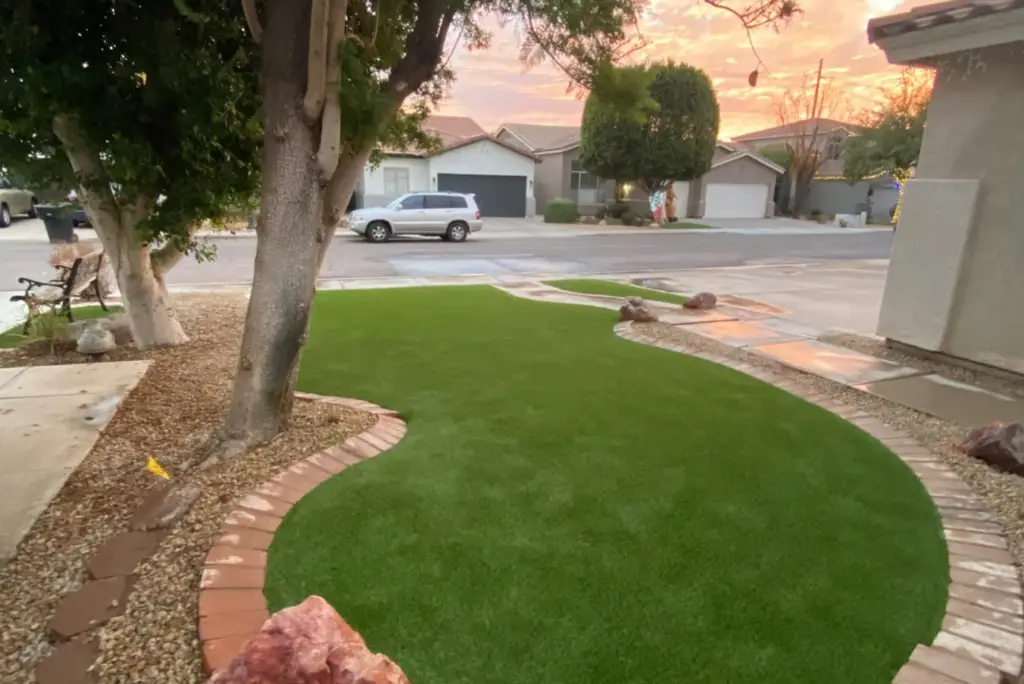Artificial turf is a synthetic grass that can be used for various purposes, such as landscaping, sports fields, playgrounds, and more. Artificial turf has many advantages over natural grass, such as water conservation, low maintenance, durability, and aesthetics. But how much do you really know about artificial turf? There are many myths and misconceptions about artificial turf that can prevent you from making an informed decision. In this blog post, we will debunk five of the most common myths about artificial turf and reveal the truth behind them.
Myth 1: Artificial Turf Looks Fake and Unnatural
This myth is based on the outdated and inaccurate image of artificial turf as a shiny and plastic-looking surface that resembles a green carpet. The reality is that modern artificial turf has come a long way since its invention in the 1960s. Today’s artificial turf is made of high-quality synthetic fibers that mimic the look and feel of natural grass. Artificial turf comes in different types, colors, and textures that can suit different needs and preferences. For example, landscape turf is designed to look exactly like natural grass, while sports turf is optimized for performance and durability. Artificial turf can also be customized with different patterns, logos, shapes, and sizes to create a unique and attractive surface.
Myth 2: Artificial Turf is Only for Sports Fields
This myth stems from the fact that artificial turf was originally developed for sports use in the 1960s. The first large-scale installation of artificial turf was in the Houston Astrodome, the world’s first multi-purpose domed stadium1. Since then, artificial turf has become popular and widely used for various sports fields, such as baseball, football, soccer, hockey, tennis, golf, and more. However, artificial turf is not limited to sports use. Artificial turf has also become a popular choice for residential and commercial landscaping, as it provides a green and low-maintenance alternative to natural grass. Artificial turf can also be used for playgrounds, dog runs, patios, rooftops, balconies, and other applications.
Myth 3: Artificial Turf Requires No Maintenance
This myth is based on the assumption that artificial turf is a maintenance-free product that does not need any care or attention. The truth is that artificial turf requires less maintenance than natural grass, but not zero maintenance. Artificial turf does not need watering, mowing, fertilizing, or weeding, which can save you time and money. However, artificial turf still needs some basic maintenance to keep it clean and fresh. Some of the maintenance tasks include:
-
Removing debris and leaves with a leaf blower or a rake
-
Brushing the fibers against the grain with a broom or a rake to keep them upright and fluffy
-
Spraying the surface with water or a mild detergent to remove dust and dirt
-
Applying infill material (such as sand or rubber) to fill the gaps between the fibers and provide cushioning and stability
-
Repairing any damages or tears with glue or tape
Myth 4: Artificial Turf Gets Too Hot in Summer
This myth is based on the observation that artificial turf can get warmer than natural grass in hot weather conditions. This is because artificial turf does not have water flowing through it to cool it down like natural grass does. However, this does not mean that artificial turf gets too hot to use or enjoy in summer. There are several ways to keep your artificial turf cool and comfortable in summer:
-
Choose a lighter color of artificial turf that reflects more heat than a darker color
-
Choose an infill material that absorbs less heat than others (such as cork or silica sand)
-
Install a shade structure (such as an umbrella or a pergola) over your artificial turf area
-
Spray your artificial turf with water before using it to lower its temperature
-
Avoid using metal furniture or objects on your artificial turf that can conduct heat
Myth 5: Artificial Turf is Bad for the Environment
This myth is based on the belief that artificial turf is made of harmful materials that can pollute the environment and harm wildlife. The truth is that artificial turf can actually be beneficial for the environment in many ways:
-
Artificial turf saves water by eliminating the need for irrigation
-
Artificial turf reduces chemical use by eliminating the need for fertilizers, pesticides, and herbicides
-
Artificial turf prevents soil erosion and water runoff by providing a stable and permeable surface
-
Artificial turf reduces greenhouse gas emissions by eliminating the need for lawn mowers and other equipment that use fossil fuels
-
Artificial turf recycles waste materials by using recycled plastic bottles or tires as raw materials
-
Artificial turf is recyclable and reusable by being converted into new products or materials after its lifespan
We hope this blog post has helped you learn more about artificial turf and dispel some of the myths surrounding it. If you are interested in installing artificial turf for your home or business, contact All Valley Turf @ 480-480-0424 today for a free estimate and consultation. We are the premier artificial turf installation company in Arizona, with years of experience and expertise in the industry. We offer high-quality products and services at affordable prices. We are committed to customer satisfaction and environmental sustainability. Let us help you transform your outdoor space with artificial turf.

